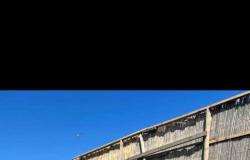«Today you cannot think of playing football, managing a high-level club from Serie B upwards with a fragile or incomplete managerial structure.
It is necessary for the sporting and corporate aspects to grow hand in hand, activating all business lines to make that project sustainable. Today there are the tools to do it and I believe that, from the first steps taken in recent years, Como has in mind that this is the path to follow: to equip itself with qualified management at all levels, also training it first-hand”.
For Marco Bellinazzo, a journalist from Il Sole 24 Ore who deals with sports economics and, in particular, the “business” that revolves around the world of football, the new Como 1907 proposal goes in the direction that the clubs of the major leagues should follow and Indeed, it could really trace a path in Italy that is still little traveled, but destined to mark the future.
The Como club, in fact, has decided to focus on a new training project aimed at future professionals in the sports business sector who dream of a career in the sports industry. At the end of the courses, the five most deserving young people will have the opportunity to have an interview with the club which, therefore, directly trains its internal resources to strengthen a sector that is now strategic also in the world of football.
Today football clubs are real companies. When did this transformation begin and at what point is it?
In recent years the process of transforming football clubs into companies, media companies, has accelerated, with business lines that have to do not only with the canonical commercial aspects, linked to the box office and the classic combination of tickets and season tickets, but also with new sectors and new areas. They must be more internally structured companies.
This means equipping ourselves with increasingly qualified management at all levels of the management chain. This is why the most structured companies in recent years have started recruiting managers from various industrial sectors to develop these simple, real training structures for a modern football manager who knows the peculiarities of this type of company and the fundamental innovations for stay on the market.
What are the most virtuous examples?
Real Madrid is a point of reference, one of the clubs that has its own Academy that not only trains players and technicians, but also managers who have these types of characteristics. In Italy, the Como initiative is absolutely worth highlighting, because it is part of this international path.
In our country, companies tend to rely on many master’s, post-graduate or university training courses which increasingly include specialization in business management and the digital field. A model that provides for an internal training structure is still missing, but it is perhaps only a matter of time and in Italy too we will witness phenomena of this type. Como is a point of reference for small to medium sized companies, even though it has very rich ownership.
Why did the Hartonos choose Como for their project?
It is often the market that offers opportunities at certain times. Como has a great advantage, being a club that is associated with the name of a very well-known city in the world. It represents an investment opportunity; buying these clubs when they are in the lower leagues means paying a very low price, investing in an upward path and creating an asset, a more precious asset where you reach Serie A and it is possible to do a project linked to the stadium, to the sports center , making the club an asset that can be maintained or put back on the market to perhaps be resold. Now in Como it will be important to work on the stadium, create a virtuous and sustainable system, then it depends on the ambitions that the club has in Serie A.
There are some examples in Italy and they are not even far from Como.
In Italy there is a model club for everyone, Atalanta. A reality with a medium-small catchment area, but thanks to great sports and asset management it has created a model capable of winning on the pitch in a short time, obtaining important results by enhancing a club that the Percassi family purchased in 2010 and shortly after for more than a decade he has achieved not only profits of 160 million, but the value of the club approaching half a billion. The Como management therefore does not have to look very far ahead. D.Col.





